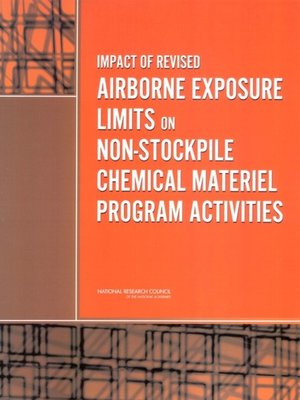Impact of Revised Airborne Exposure Limits on Non-Stockpile Chemical Materiel Program Activities
ebook
By National Research Council

Sign up to save your library
With an OverDrive account, you can save your favorite libraries for at-a-glance information about availability. Find out more about OverDrive accounts.
Find this title in Libby, the library reading app by OverDrive.



Search for a digital library with this title
Title found at these libraries:
| Library Name | Distance |
|---|---|
| Loading... |
The U.S. Army's Non-Stockpile Chemical Materiel program is responsible for dismantling former chemical agent production facilities and destroying recovered chemical materiel. In response to congressional requirements, the Center for Disease Control (CDC), in 2003, recommended new airborne exposure limits (AELs) to protect workforce and public health during operations to destroy this materiel. To assist in meeting these recommended limits, the U.S. Army asked the NRC for a review of its implementation plans for destruction of production facilities at the Newport Chemical Depot and the operation of two types of mobile destruction systems. This report presents the results of that review. It provides recommendations on analytical methods, on airborne containment monitoring, on operational procedures, on the applicability of the Resource Conservation and Recovery Act, and on involvement of workers and the public in implementation of the new AELs.







